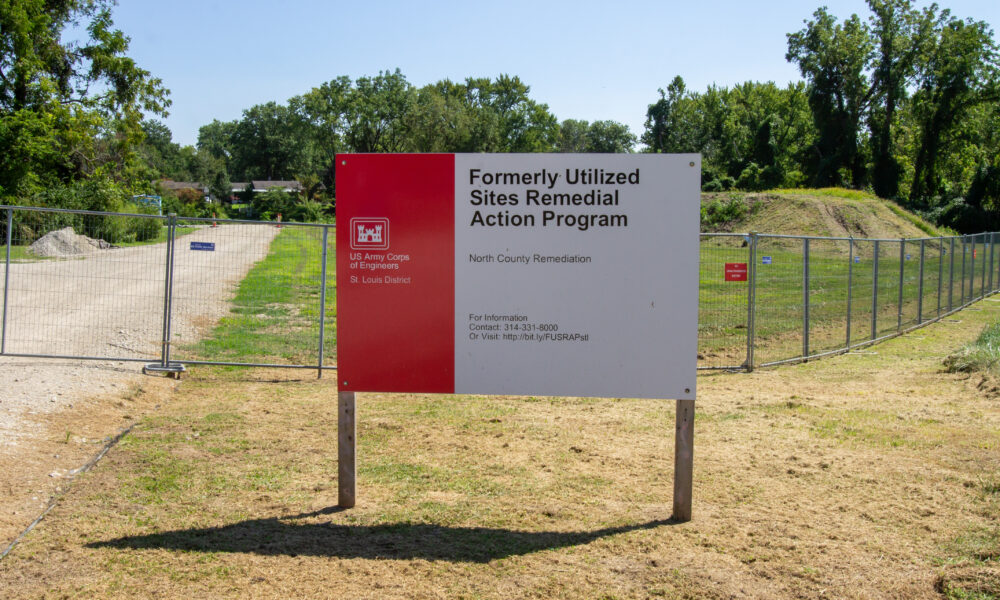At the request of Missouri Congresswoman Cori Bush and House Oversight Committee Chairwoman Carolyn Maloney, the US Government Accountability Office (GAO) initiated an investigation of the United States Formerly Utilized Sites Remedial Action Program (FUSRAP) managed by the US Army Corps of Engineers. The GAO released those findings in mid-October after a years-long investigation.
For brief context, FUSRAP was created to locate and remediate the federal government’s nuclear weapons waste generated during the Manhattan Project and Cold War era efforts of the 1940s–1950s.
The GAO found that “the Corps minimally met selected leading practices for program management related to risk management and cost estimating, among other things.”
A few key takeaways:
- Since 2016, FUSRAP’s environmental liability has risen by nearly $1 billion, an increase that officials attribute to uncertainties, along with inflation.
- The Corps does not have a documented program-level risk management process for FUSRAP.
- Of the 19 active sites in the program, four sites with complicated cleanup remedies or large amounts of contamination make up about three-quarters of the estimated budget for FY2022. Of those four sites, North St. Louis County is the third highest estimated liability, topping off at $406 million in FY2022
- As of the end of fiscal year 2022, FUSRAP had an unobligated (unused) balance of about $182 million.
- The North St. Louis County and St. Louis Downtown Sites are near both underserved racial or ethnic populations and families in poverty when compared with the rest of the county where the site is located.
- Opportunities exist for the Corps to improve outreach and build better relationships with communities around FUSRAP sites.
We agree that better outreach and transparency from the Army Corps is necessary to protect the communities living next to these sites.
It is clear the Corps does not have an accurate, full account of the contamination at their sites. And, while St. Louis sites account for a bulk portion of the funding, the cleanup is moving at a snail’s pace. It’s troubling, to say the least, to learn millions of dollars went unused last year. Especially when you consider St. Louis has the most Manhattan Project radioactive waste in the nation in terms of volume and acreage. The people of North St. Louis County have been waiting for decades to have the waste removed from their backyards, schools, parks, private industry, and common grounds. The Corps estimates it will be another 15 years before remediation will be complete. That’s nearly 100 years since the government’s radioactive waste has been allowed to poison our communities. That is unacceptable. Citizens of St. Louis — and beyond — deserve an expedited, more comprehensive cleanup.
You can read the GAO’s list of recommendations for the Corps and the full report here.


The location of these sites tell a familiar story.
They HATE us.
Us, as in the people who built this country.
Blacks!
My wife of 37 years died of breast cancer in 2012 her mother died of cancer in 2006 and so did her father in 2004. They all lived in South St louis during the Zinc Cadmium Sulfide experiments. They were also exposed to all of the air pollution from Mallinckrodt, St Joseph led mining, and cement manufacturing along the Mississippi in south county St Louis. The government should be held responsible for cleaning up this remnant from our defense department’s nuclear
experiments. These cancer causing nuclear wastes should be collected and properly stored away from human living activities.
Suggest interested people contact their local representatives, specifically those who want to reduce regulations and funding for these agencies and for FUSRAP and SUPERFUND projects. I worked on federal cleanup sites and it wasnt the agencies or the public that slowed progress. It is the politicians who do not support remediation but rather the entities that caused the pollution. Elections do have consequences and Missouri elections are a prime example of why environmental quality is not a priority.